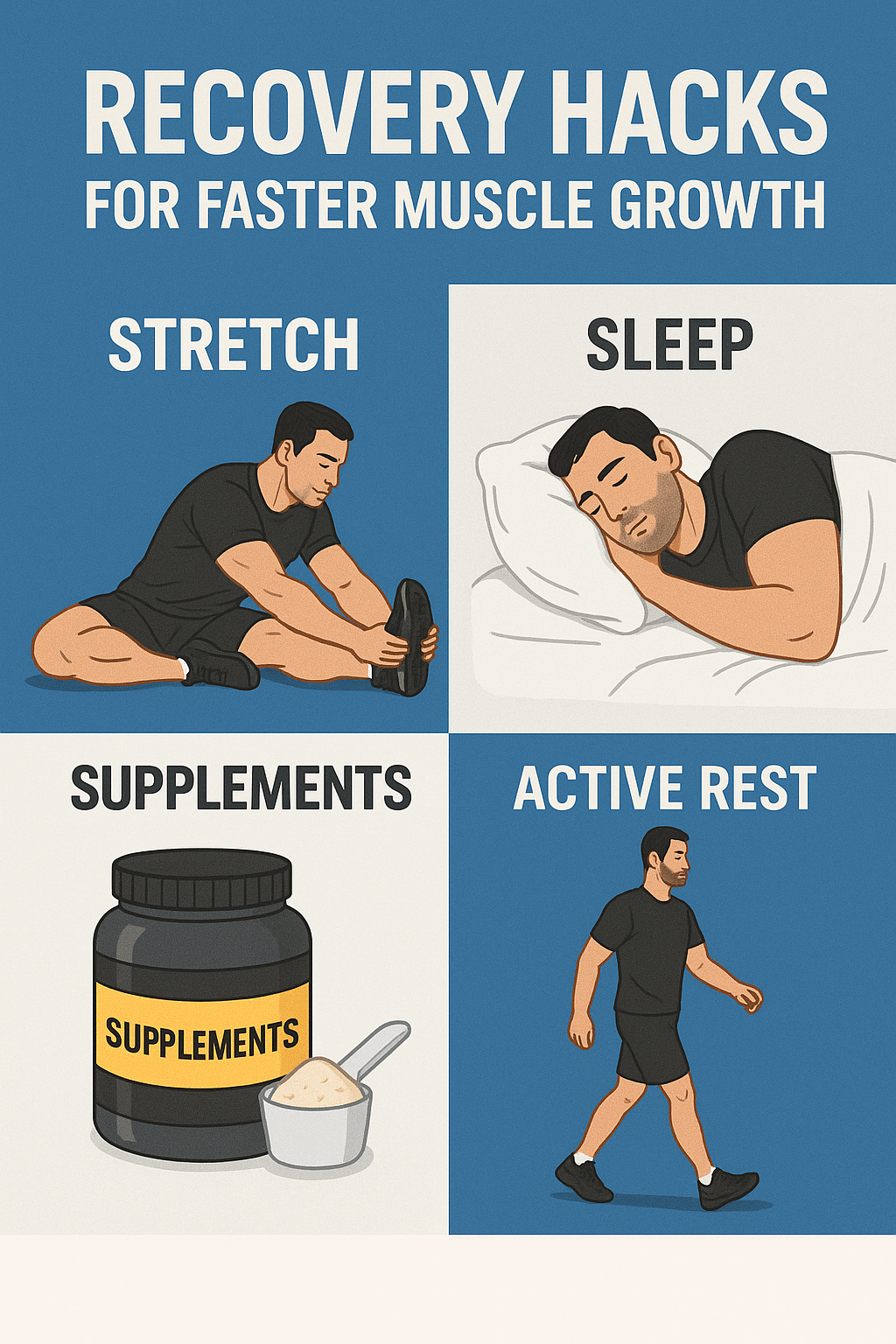
Recovery Hacks for Faster Muscle Growth
2024-07-10
Category: Health
Most lifters focus on the grind—heavy sets, high volume, and pushing to failure. But if you're not recovering properly, all that effort might go to waste. Recovery is where the real growth happens. It's when your muscles repair and come back stronger. That’s why elite athletes treat recovery as seriously as training itself.
Why Recovery Matters
Training causes micro-tears in muscle fibers. Recovery is when your body repairs those fibers and builds new ones. Without proper recovery, you risk overtraining, hitting plateaus, and even injury. The better you recover, the more you can train—and the more gains you’ll make.
Hack 1: Sleep Is Non-Negotiable
Aim for 7–9 hours of high-quality sleep each night. Growth hormone spikes during deep sleep, which is critical for muscle repair and fat loss. Establish a consistent sleep routine and avoid screens an hour before bed to support restful recovery.
Hack 2: Stretching and Mobility Work
Dynamic stretches before workouts and static stretching afterward improve flexibility, reduce soreness, and increase blood flow to muscles. Add 5–10 minutes of foam rolling post-workout to release tight fascia and improve recovery speed.
Hack 3: Active Rest Days
Rest days don’t have to mean being sedentary. Light cardio, yoga, or walking can aid blood circulation, flush toxins, and promote healing without taxing your nervous system. Schedule 1–2 active rest days per week for longevity and performance.
Hack 4: Nutrition That Supports Recovery
- Protein: 0.8–1g per pound of body weight to rebuild muscle.
- Carbs: Replenish glycogen stores post-lift.
- Fats: Support hormone production and joint health.
- Hydration: Water and electrolytes are essential for cellular repair.
Try a post-workout shake with whey protein, banana, and almond milk. Then eat a real meal within 1–2 hours of training.
Hack 5: Smart Supplementation
- Magnesium: Helps with muscle relaxation and quality sleep.
- Creatine Monohydrate: Supports recovery and increases performance.
- Omega-3s: Reduces inflammation and supports joint health.
- BCAAs or EAAs: May aid recovery during fasted or intense training periods.
Hack 6: Deload Weeks and Massage
Every 4–8 weeks, take a deload week where you reduce volume or intensity. This prevents burnout and allows your joints and CNS to reset. Also consider occasional sports massage or self-myofascial release techniques to stay limber and reduce tightness.
Recovery Tracking
Track your soreness, energy, and performance in the FitGitt App. Use these insights to adjust your training load, nutrition, or sleep habits when needed.
Final Thoughts
If you’re hitting the gym hard but feeling stuck, it's time to shift focus. Prioritize recovery. It's the multiplier that turns effort into results. For more evidence-based training advice and health insights, explore the full archive at FitGitt.com.